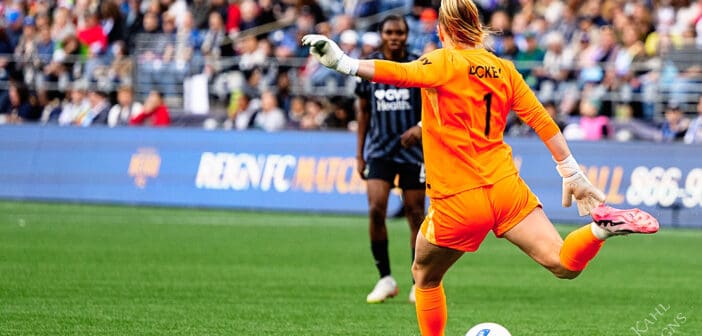Modern football has developed immeasurably over the last fifty years, with different styles of play combining into a sport that has transformed physically, philosophically, and tactically. Emphasis is more on possession, and the advent of ‘Total Football’ in the 1970s has gradually expanded to a point where all players on the pitch are able to fill in with attacking or defensive duties when called upon.
One of the most profound changes in this way relates to the goalkeeper. This position is no longer a humble shot-stopper confined to the penalty area; the goalie is now the tactical backbone of any team, helping to launch attacks and filling in for defenders who may have been caught out further up the field. Let’s take a closer look.
Early Goalkeeping
Back when football was first turning professional in the 1900s, a goalkeeper’s role was simple — stop the ball from going into the back of the net. Back in those days, tactical emphasis was on attack rather than defence and it wasn’t unusual for a goalie to find themselves with just one or two defenders.
Confined to the penalty area for much of the game, the role involved stopping shots and clearing the ball to the other end of the field for attackers to stage an offensive play. Reflexes, coordination, and positioning were the optimum attributes, rather than having any outfield ball skills, as modern keepers so often do.
Gyula Grosics — Pioneer
Grosics was a Hungarian goalkeeper, who, with the so-called Hungarian Golden Team of the 1950s, began to redefine the role of a goalkeeper, beginning a lineage that can be traced through to the modern day.
Hungary’s national team in the 50s played a style almost unrecognisable to other teams of the era, predominantly 4-2-4, but with role rotations. This meant that gaps would open up in defence, which meant that Grosics often had to speed off his line in order to intercept the ball and break up attacks.
He would also throw the ball or roll it out to maintain possession — a tactic taught in regular goalkeeper training routines today, as the goalkeeper becomes the 11th member of the outfield side.
Grosics also influenced one of the greatest goalkeepers of all time, Lev Yashin. He took the ‘sweeper-keeper’ style to new heights, happy to fill in as an extra defender, or coming off his line to either thwart an opponent’s move, or to set up an attack.
On-field presence
Like much elite sport, the shape and size of athletes have developed over the years. A good example is rugby union, where the man mountains who line up today bear little resemblance to players of yesteryear.
Goalkeepers, too, are rarely below six feet tall, able to be a commanding presence both in the penalty area and beyond. With so much emphasis on set-plays, a goalkeeper needs to be able to rise fastest and highest to gather a ball from a free kick or corner, as well as to keep shots out at full stretch, with fingertip saves often seen in the modern game.
Likewise, a goalkeeper is the heart of the team, bringing the ball up well up the field in order to launch attacks and play an incisive role in developing attacking moves, while reading the game effectively in order to retreat if defence is necessary. This makes speed, awareness, positioning, and other skills vital attributes in a goalkeeper’s arsenal.
Psychological Skills
A goalkeeper is very much an individual on the pitch. As the last line of defence, they are under tremendous pressure to perform well, stop shots to the best of their ability, and avoid any rudimentary mistakes.
However, mistakes do happen, and we often hear of goalkeeping ‘howlers’ that have led to opposition goals. The ability to bounce back from such setbacks is vital to modern goalkeeping. Everyone has bad moments in a game, but that doesn’t mean every player has a bad overall game because of it.
The psychological pressure on a goalkeeper is immense, so recovering composure and poise, even after a costly error, is something that is often worked on at the elite level with sports psychologists and other professionals. Ultimately, it is down to the goalkeepers themselves, and the world’s top shot-stoppers have formidable mental strength.
Being a goalkeeper in the modern age is more than just catching the ball and kicking it back the way it came from. A modern keeper must have many of the skills of outfield players, as well as undergo the same training as their teammates, to achieve optimum results at the elite level.
![Prost International [PINT]](https://prostinternational.com/wp-content/uploads/2021/08/PINTtFontLogoRoboto1536x78.jpg)



